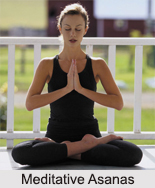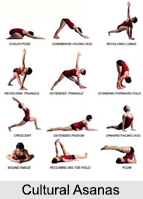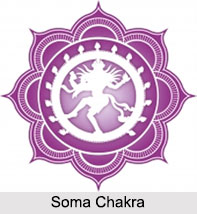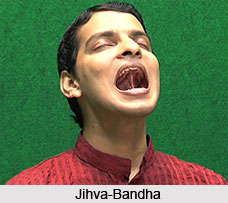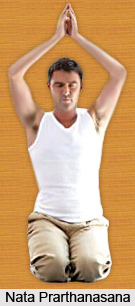 Nata Prarthanasana is a common posture seen in yoga practice, and is the usual kneeling prayer pose associated with many religious observances.
Nata Prarthanasana is a common posture seen in yoga practice, and is the usual kneeling prayer pose associated with many religious observances.
Practice of Nata Prarthanasana
* One should stand in Prarthanasana
* Then he/she should kneel down with the knees together; hips should touch the heels resting on the ground.
* One should exhale 2 counts while going down, pause 4 counts while sitting, and inhale 2 counts while getting up.
* The practitioner should keep in mind that his/her body weight falls through the toes.
Effects of Nata Prarthanasana -
If Nata Prarthanasana is practiced as an asana, it cultures the quadriceps, soleus, gastrocnemius and intrinsic muscles of the foot. Extensors of the leg are stretched. Coordination of muscular activity in the dynamic practice of Nata Prarthanasana increases the range of plantar flexion at the ankle. Moreover, this also stretches the extensor group of muscles of ankle and those of the toes in the antigravity effort.
This article is a stub. You can enrich by adding more information to it. Send your Write Up to content@indianetzone.com
